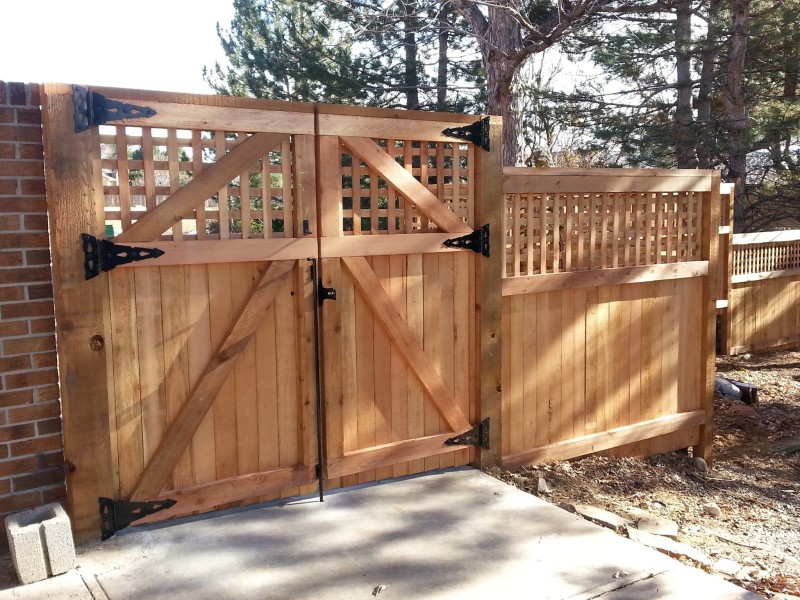All Categories
Featured
A properly maintained fencing can significantly boost the aesthetic charm of your residential property, provide safety, and work as a boundary marker for your backyard or company. Like any kind of various other outdoor structure, a fence requires routine maintenance to maintain its stability and look over time. Whether your fence is made from timber, steel, plastic, or chain link, complying with some fundamental maintenance pointers can help guarantee its long life and performance. Below's just how you can keep your surround excellent condition year-round.
![]()
Wooden Fences: Make use of a pressure washing machine with a low-pressure setup to gently eliminate dirt and debris. For stubborn spots or mold and mildew, scrub the influenced locations with a mixture of water and moderate cleaning agent or a vinegar service. Plastic Fencings: Vinyl fencings are easy to clean with soapy water and a soft brush. Stay clear of unpleasant materials, as they can scratch the surface. Metal Fencings: Light weight aluminum or wrought iron fences can be cleaned up with a soft cloth or sponge soaked in soapy water. For corrosion, utilize a rust cleaner especially developed for steel surfaces. Chain Link Fencings: A simple clean with a tube or a pressure washer can clear debris from chain web link fencings. You might additionally need to trim any plants expanding near the fence. 2. Look for Damage and Make Fixes Immediately. For wooden fencings, check for decomposing or bending of the slabs. Steel fences may establish rust places, while vinyl fences can become brittle or cracked in severe weather condition conditions.
If you find any kind of problems, make repair work asap. Small solutions, such as replacing a few loosened or damaged boards, can prevent larger, a lot more expensive repairs down the line. For rust, you can sand it down and apply a coat of rust-resistant paint to prolong the life of the metal.
If your wood fencing is repainted, look for peeling paint and retouch any kind of spots to keep its look and protect the timber from the aspects.
Furthermore, bear in mind dropped branches or leaves, especially in autumn, as they can cause and accumulate dampness build-up, causing deteriorating or rusting, specifically in wooden and steel fences.
![]()
![]()
Conclusion. Routine maintenance is essential to keeping your fence looking excellent and functioning correctly for several years. Whether you have a wooden, chain, plastic, or steel web link fencing, complying with these suggestions will certainly assist you preserve its charm and toughness.
- Routine Cleaning. Cleansing your fencing regularly is just one of the simplest and most reliable means to maintain it in top shape. Gradually, dirt, mildew, algae, and mold can accumulate, specifically on wood fences. These contaminants not only influence the look of your fence yet can also deteriorate the product if left without treatment. To clean your fencing:

Wooden Fences: Make use of a pressure washing machine with a low-pressure setup to gently eliminate dirt and debris. For stubborn spots or mold and mildew, scrub the influenced locations with a mixture of water and moderate cleaning agent or a vinegar service. Plastic Fencings: Vinyl fencings are easy to clean with soapy water and a soft brush. Stay clear of unpleasant materials, as they can scratch the surface. Metal Fencings: Light weight aluminum or wrought iron fences can be cleaned up with a soft cloth or sponge soaked in soapy water. For corrosion, utilize a rust cleaner especially developed for steel surfaces. Chain Link Fencings: A simple clean with a tube or a pressure washer can clear debris from chain web link fencings. You might additionally need to trim any plants expanding near the fence. 2. Look for Damage and Make Fixes Immediately. For wooden fencings, check for decomposing or bending of the slabs. Steel fences may establish rust places, while vinyl fences can become brittle or cracked in severe weather condition conditions.
If you find any kind of problems, make repair work asap. Small solutions, such as replacing a few loosened or damaged boards, can prevent larger, a lot more expensive repairs down the line. For rust, you can sand it down and apply a coat of rust-resistant paint to prolong the life of the metal.
- Deal With Wooden Fences for Weather Condition Security. Wooden fencings are especially at risk to weather damages. To stop this, treat your wooden fence with a protective sealer or stain.
If your wood fencing is repainted, look for peeling paint and retouch any kind of spots to keep its look and protect the timber from the aspects.
- Keep Greenery in Examine. Hedges and plants expanding near or on your fence can cause significant damages. Origins from close-by trees or bushes might get into the room around fencing articles, destabilizing them.
Furthermore, bear in mind dropped branches or leaves, especially in autumn, as they can cause and accumulate dampness build-up, causing deteriorating or rusting, specifically in wooden and steel fences.

- Reapply Safety Coatings for Steel Fences. Steel fencings, such as functioned iron or light weight aluminum, can last for many years with the appropriate treatment. Steel is prone to rust, especially when revealed to dampness. Reapply safety coverings, such as rust-resistant paint, every few years to keep your fencing looking great and secure it from the components. Check for indicators of corrosion and address it immediately with a cord brush and touch-up paint.
- Preserve the Fencing's Architectural Integrity. For wood fencings, evaluate the base of the posts for indicators of rot. For metal and plastic fences, inspect the blog posts for any kind of flexing or damages.

Conclusion. Routine maintenance is essential to keeping your fence looking excellent and functioning correctly for several years. Whether you have a wooden, chain, plastic, or steel web link fencing, complying with these suggestions will certainly assist you preserve its charm and toughness.
Latest Posts
The Benefits of Consistent Auto Maintenance at Montclare Auto Repair Keeps Your Wallet Happy
Published May 26, 25
1 min read
Unlock WyHy Federal Credit Union – Top Benefits for Your Future
Published May 25, 25
1 min read
Check Out Budget-Friendly Auto Repairs with Montclare’s Exclusive Service Specials
Published May 24, 25
1 min read
More
Latest Posts
The Benefits of Consistent Auto Maintenance at Montclare Auto Repair Keeps Your Wallet Happy
Published May 26, 25
1 min read
Unlock WyHy Federal Credit Union – Top Benefits for Your Future
Published May 25, 25
1 min read
Check Out Budget-Friendly Auto Repairs with Montclare’s Exclusive Service Specials
Published May 24, 25
1 min read